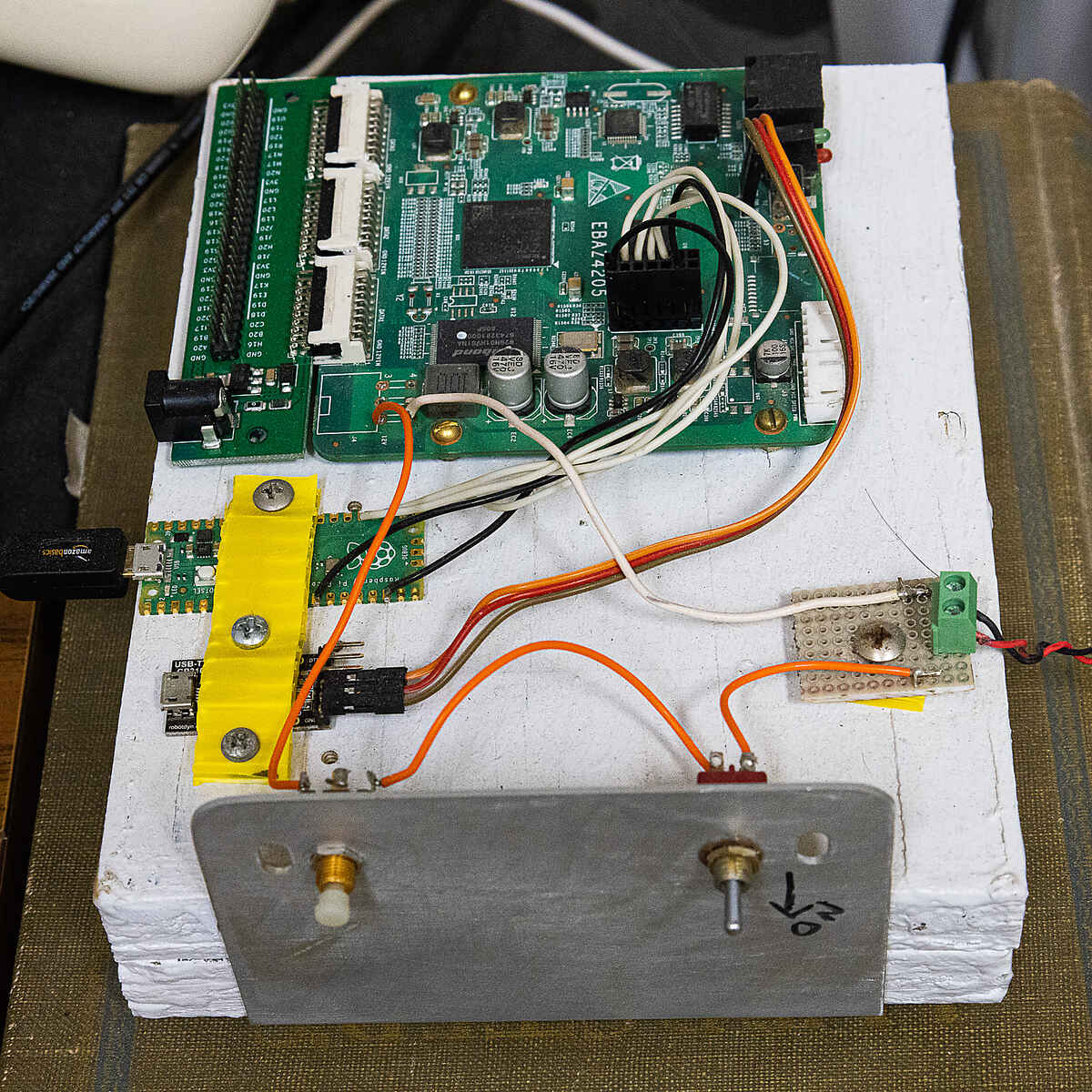May 2, 2023
EBAZ4205 Bitcoin miner board - my setup
 Above is the way I have my board setup for development and experimentation.
Above is the way I have my board setup for development and experimentation.
Base and power supply
I dug around in my scrap pile and found a block made of 2 pieces of plywood,
already glued together and painted white. I dug around some more in my parts
drawers and found four rubber feet from some old terminal and installed those.
Then four standoffs and scome screws and the board was mounted.
Having it mounted like this avoids having cables drag it off my desk and
without doubt reduces how much static electricity it gets exposed to when
compared to laying on the floor or sliding around the desk.
Next I did some solder work to move one of the three power supply diodes
so I can use what used to be the 3 pin modular power connector.
I now know that you an cut up an old PC power supply connector to get
mating parts, but when I first did this I had no idea about that and
removed the modular connector. You will note that I have both a switch
and a button controlling power. The switch turns it off entirely.
The button briefly interrupts power which is my substitute for a reset
to reboot the thing. At first I ran it from a 12 volt supply, but I
have since learned that a 6 volts supply is fine, and now run it from
a 6 volt 2.1 amp "wall wart" that was in my big box of wall warts.
Serial console
I use a little CP2104 USB to serial board.
The baud rate is 115200.
You will note that both this and the PiPico I use for JTAG are held in place
by a strip of yellow corrugated plastic. I obtained this material after the
last election by harvesting some political campaign signs in my neighborhood.
It is handy stuff, better than cardboard, and non-conductive.
I buy these USB to serial adapters by the dozen on AliExpress.
JTAG
Both this and the serial console involve some trivial soldering to install
headers on the board. Once I had the JTAG header in place, I was eager
to use JTAG in conjunction the the Vivado software from Xilinx.
I found that I could take a $4 PiPico, and install xvc-pico on it and it
works like a charm:
IO connectors
As you probably already know the three white IO connectors have pins on a
2.0mm spacing (rather than the much more convenient and usual 2.54mm = 0.1 inch).
I found a fellow selling the nice adapter board you see attached to my
Ebaz board. He sells these for $15 (I bought three). They are often out of
stock, so you should ask to be notified when they come back in stock, as I did.
Note that these provide a barrel connector, and if you had one of these it would
supply power via the IO connectors and you could just ignore the 6 pin modular
connector and also avoid moving the power diode via tricky unsoldering.
Suit yourself on all of that.
You can also buy 2mm pitch connectors on AliExpress. I had to look around quite a bit
to find them. Here are 3 links:
Feedback? Questions?
Drop me a line!
Tom's Computer Info / [email protected]
 Above is the way I have my board setup for development and experimentation.
Above is the way I have my board setup for development and experimentation.
 Above is the way I have my board setup for development and experimentation.
Above is the way I have my board setup for development and experimentation.